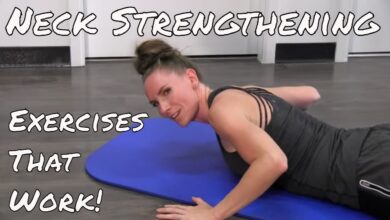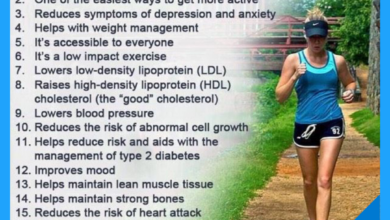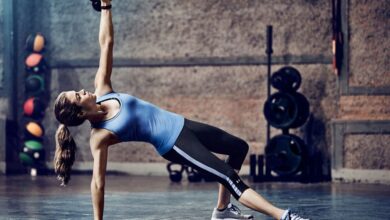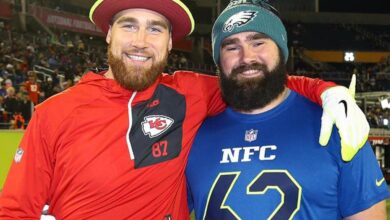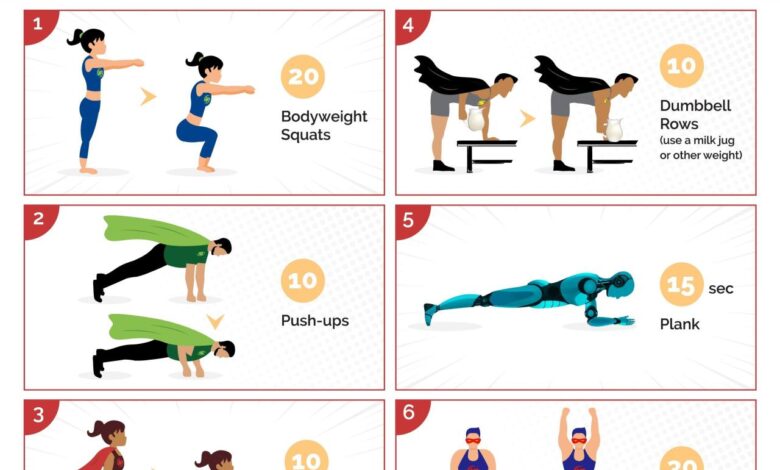
Home Bodyweight Workout 2: Level Up Your Fitness
Ready to take your home workouts to the next level? Home Bodyweight Workout 2 is here to challenge you and help you unlock new levels of strength and endurance. We’ll delve into a variety of exercises, from beginner-friendly to advanced, all using your own bodyweight.
This workout routine is designed to be accessible, effective, and adaptable to your individual fitness goals. Whether you’re looking to build muscle, improve your cardiovascular health, or simply want a fun and engaging way to stay active, this guide has something for you.
This second installment takes what you learned in the first workout and pushes you further. We’ll explore more advanced exercises, refine your form, and provide you with the tools you need to achieve your fitness goals. Get ready to push your limits and discover the incredible potential of your body!
Introduction to Home Bodyweight Workouts
Home bodyweight workouts are a fantastic way to get fit and stay in shape without needing expensive gym memberships or equipment. These workouts can be just as effective as traditional weightlifting, and they offer several advantages that make them an appealing choice for many people.
Benefits of Home Bodyweight Workouts
Bodyweight training offers numerous benefits, making it a popular choice for people of all fitness levels. These benefits include:
- Convenience: You can work out whenever and wherever you want, eliminating the need to travel to a gym or wait for equipment. This flexibility is especially helpful for busy individuals who may not have time to go to the gym regularly.
- Accessibility: Bodyweight exercises require no special equipment, making them accessible to everyone. This is especially important for people who may have limited resources or may not feel comfortable working out in a gym setting.
- Versatility: There are countless bodyweight exercises, allowing you to target different muscle groups and create a diverse workout routine. This variety helps prevent boredom and ensures that you continue to challenge your body.
- Increased Strength and Power: Bodyweight exercises engage multiple muscle groups simultaneously, leading to improved overall strength and power. As you progress, you can increase the difficulty of the exercises by adding repetitions, sets, or variations.
- Improved Body Composition: Bodyweight workouts can help you build lean muscle mass and burn calories, leading to improved body composition. This can result in a more toned physique and a healthier weight.
- Reduced Risk of Injury: Bodyweight exercises are generally low-impact, reducing the risk of injury compared to other forms of exercise. However, it’s important to use proper form and start with easier variations before progressing to more challenging ones.
- Improved Flexibility and Mobility: Many bodyweight exercises, such as yoga and Pilates, promote flexibility and mobility, leading to improved range of motion and reduced stiffness.
Equipment Needed for a Home Bodyweight Workout Routine
While bodyweight exercises require no special equipment, there are a few optional items that can enhance your workouts and provide additional challenges. These include:
- Pull-up bar: This is a great addition for upper body exercises like pull-ups, chin-ups, and rows. It can be installed in a doorway or purchased as a freestanding unit.
- Resistance bands: Resistance bands provide additional resistance for exercises like squats, lunges, and push-ups. They are also great for stretching and rehabilitation.
- Yoga mat: A yoga mat provides cushioning and support for floor exercises, making them more comfortable and preventing injuries.
- Foam roller: A foam roller is a great tool for self-massage and muscle recovery. It can help to relieve muscle tension and improve flexibility.
Setting Up a Dedicated Workout Space at Home
Having a designated workout space at home can help you stay motivated and consistent with your fitness routine. Here are some tips for setting up a dedicated workout space:
- Choose a suitable location: Find a space that is large enough to accommodate your workouts and has good ventilation. It should also be free from distractions and interruptions.
- Clear the space: Remove any clutter or obstacles that might get in your way during your workouts. Make sure the floor is clear and free of tripping hazards.
- Add some motivation: Consider adding a mirror to help you check your form, motivational posters to keep you inspired, or even a small sound system to play your favorite music.
- Make it comfortable: Ensure your space has adequate lighting, and if you plan on working out on the floor, consider adding a comfortable mat or rug.
- Keep it accessible: Make sure your workout space is easily accessible so that you are more likely to use it. This might mean placing it near your bedroom or in a central location in your home.
Warm-up and Cool-down
A proper warm-up prepares your body for the workout ahead, reducing the risk of injury and enhancing performance. Similarly, a cool-down helps your body recover and prevents stiffness.
Dynamic Warm-up
A dynamic warm-up involves controlled movements that gradually increase your heart rate and blood flow, improving flexibility and range of motion. This is a suitable approach for a home bodyweight workout as it mimics the movements you’ll be performing during the workout.Here is a sample dynamic warm-up routine:
- Arm circles:Stand with your feet shoulder-width apart. Extend your arms out to your sides, then slowly circle them forward for 10-15 repetitions. Reverse the direction and circle your arms backward for another 10-15 repetitions.
- Leg swings:Stand with your feet hip-width apart. Swing one leg forward and back, keeping your core engaged and maintaining a slight bend in your knee. Perform 10-15 repetitions on each leg.
- High knees:Stand with your feet hip-width apart. Bring your knees up towards your chest as you run in place. Keep your core engaged and maintain a good posture. Perform for 30 seconds.
- Butt kicks:Stand with your feet hip-width apart. Bring your heels up towards your buttocks as you run in place. Keep your core engaged and maintain a good posture. Perform for 30 seconds.
- Arm and leg swings:Stand with your feet hip-width apart. Swing your right arm forward and your left leg back simultaneously. Repeat the movement on the other side, swinging your left arm forward and your right leg back. Continue alternating sides for 10-15 repetitions.
- Jumping jacks:Stand with your feet together. Jump while simultaneously spreading your legs out to the sides and raising your arms above your head. Return to the starting position. Perform 10-15 repetitions.
Cool-down
A cool-down helps your body gradually transition back to a resting state, reducing muscle soreness and promoting recovery. Stretching is a crucial part of the cool-down, as it improves flexibility and range of motion.Here is a sample cool-down routine:
- Hamstring stretch:Sit on the floor with your legs extended in front of you. Reach towards your toes, keeping your back straight. Hold for 30 seconds.
- Quadriceps stretch:Stand with your feet hip-width apart. Grab one foot with your hand and pull your heel towards your buttocks. Keep your back straight and your core engaged. Hold for 30 seconds. Repeat on the other side.
- Calf stretch:Stand facing a wall with your feet shoulder-width apart. Step back with one foot, keeping your heel on the ground. Lean forward until you feel a stretch in your calf. Hold for 30 seconds. Repeat on the other side.
Home bodyweight workout 2 is all about building strength and endurance, and after a great session, it’s time to refuel! Trader Joe’s has a fantastic selection of pumpkin-flavored snacks, perfect for post-workout recovery. Check out 8 rd approved pumpkin flavored snacks to buy at trader joes to find the perfect treat for your taste buds.
Then, get back to your routine, as those gains won’t build themselves!
- Chest stretch:Interlock your fingers behind your back and raise your arms overhead. Push your chest forward and hold for 30 seconds.
- Shoulder stretch:Stand with your feet hip-width apart. Reach your right arm across your body and grab it with your left hand. Pull your right arm towards your chest and hold for 30 seconds. Repeat on the other side.
- Triceps stretch:Raise one arm overhead and bend it at the elbow, bringing your hand down behind your head. With your other hand, grab just above your elbow and pull your arm closer to your head until you feel a stretch in your triceps.
Hold for 30 seconds. Repeat on the other side.
Fundamental Bodyweight Exercises
Bodyweight exercises are a fantastic way to build strength, endurance, and flexibility without needing any equipment. These exercises use your own body weight as resistance, making them accessible and convenient for home workouts.
Fundamental Bodyweight Exercises
Here’s a table outlining some fundamental bodyweight exercises, their target muscles, descriptions, variations, and tips for proper form:
| Exercise Name | Target Muscles | Description | Variations | Tips |
|---|---|---|---|---|
| Push-ups | Chest, shoulders, triceps | Start in a plank position with hands shoulder-width apart. Lower your chest towards the floor, keeping your body in a straight line. Push back up to the starting position. |
|
|
| Squats | Quadriceps, hamstrings, glutes | Stand with feet shoulder-width apart, toes slightly pointed out. Lower your hips as if sitting in a chair, keeping your back straight and core engaged. Push back up to the starting position. |
|
|
| Lunges | Quadriceps, hamstrings, glutes, calves | Step forward with one leg, bending both knees to a 90-degree angle. Keep your front knee behind your toes and your back knee close to the floor. Push back up to the starting position and repeat on the other side. |
|
|
| Plank | Core, shoulders, back | Start in a push-up position, with your forearms on the floor and your body in a straight line. Hold this position, engaging your core and maintaining a stable body. |
|
|
| Crunches | Abdominals | Lie on your back with knees bent and feet flat on the floor. Place your hands behind your head and curl your upper body towards your knees, engaging your abs. Slowly lower back to the starting position. |
|
|
| Burpees | Full body | Start standing. Squat down and place your hands on the floor in front of you. Kick your feet back into a plank position. Do a push-up. Return to plank position. Bring your feet forward and jump up, reaching your arms overhead. |
|
|
Intermediate Bodyweight Exercises: Home Bodyweight Workout 2
As you progress in your fitness journey, you’ll want to challenge yourself with more advanced exercises. Intermediate bodyweight exercises build upon the foundation of fundamental movements, requiring greater strength, coordination, and balance. These exercises can help you sculpt your physique, enhance your functional fitness, and unlock a new level of physical potential.
Intermediate Bodyweight Exercises
These exercises are a great way to challenge yourself and continue to build strength and muscle. They require more coordination and balance than beginner exercises, so it’s important to practice proper form before attempting them.
| Exercise Name | Target Muscles | Description | Variations | Tips |
|---|---|---|---|---|
| Handstand Push-ups | Shoulders, Triceps, Core | A challenging variation of the push-up performed in an inverted position. Begin in a handstand position, with your hands shoulder-width apart and your body in a straight line. Lower your body until your head touches the ground, then push back up to the starting position. |
|
|
| Pistol Squats | Quadriceps, Hamstrings, Glutes, Calves | A single-leg squat where you lower your body down until your thigh is parallel to the ground, maintaining balance on one leg. It’s a challenging exercise that strengthens your leg muscles and improves balance. |
|
|
| Bulgarian Split Squats | Quadriceps, Hamstrings, Glutes | A unilateral exercise that targets your legs and glutes by placing one foot on a bench or elevated surface. It requires balance and coordination, and helps to build strength and muscle definition. |
|
|
| Side Plank | Obliques, Core, Shoulders | An isometric exercise that strengthens your core muscles by holding your body in a straight line, supported by your forearm and one foot. It’s a great exercise for building core strength and improving stability. |
|
|
| Russian Twists | Obliques, Core | A dynamic exercise that works your obliques by twisting your torso from side to side while sitting on the ground with your knees bent and your feet flat on the floor. It helps to improve core strength and rotational power. |
|
|
| Mountain Climbers | Core, Shoulders, Legs | A dynamic exercise that works your entire body by mimicking a running motion while in a plank position. It’s a great exercise for improving cardiovascular fitness, core strength, and agility. |
|
|
Advanced Bodyweight Exercises
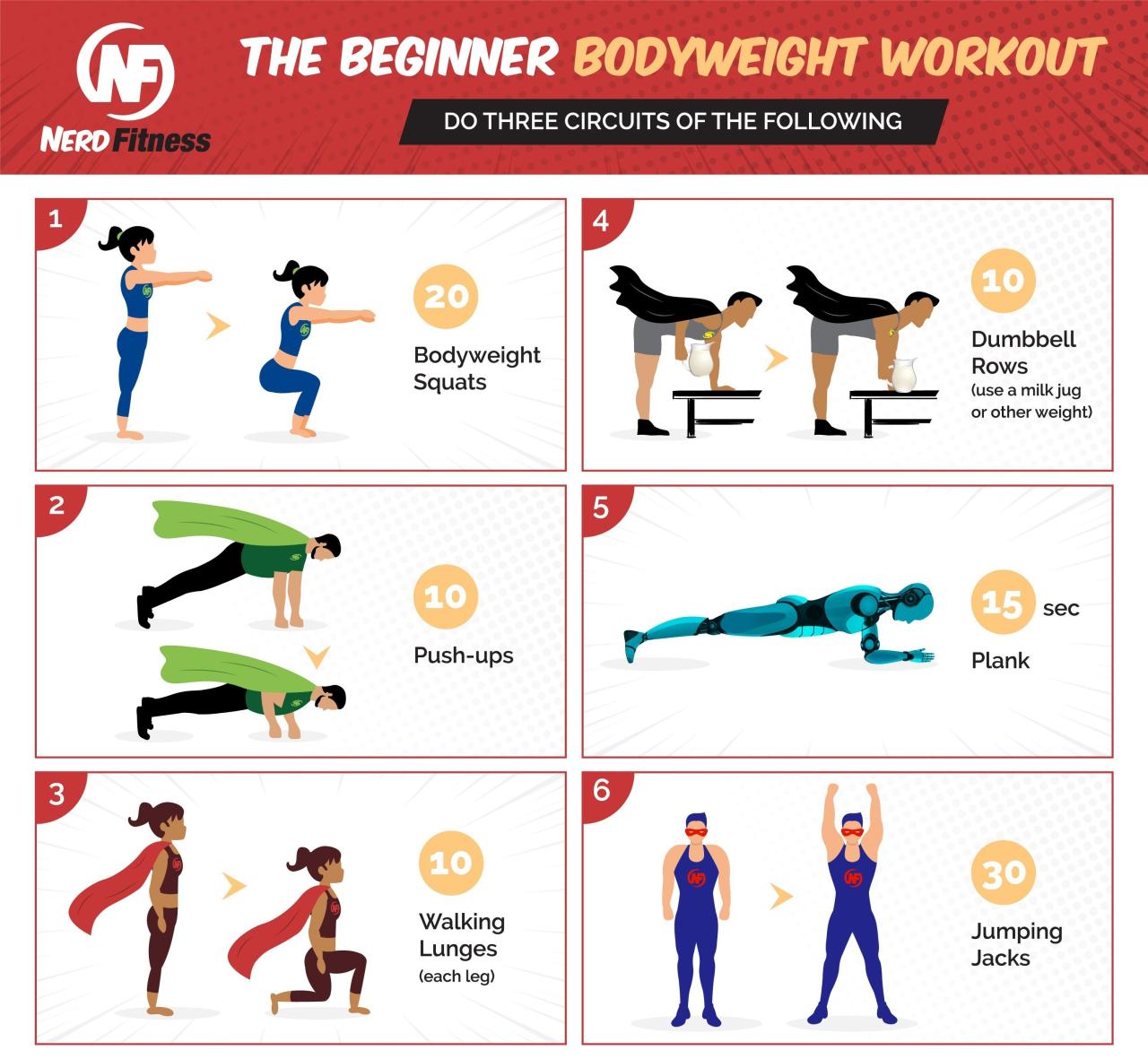
This section delves into advanced bodyweight exercises that require a higher level of strength, coordination, and control. These exercises can be challenging but rewarding, offering a great way to push your fitness boundaries and improve your overall strength and athleticism.
Advanced Bodyweight Exercises
Advanced bodyweight exercises are designed to challenge your body in new ways and build strength, power, and coordination. These exercises often require a solid foundation in basic bodyweight movements and a good level of fitness.
| Exercise Name | Target Muscles | Description | Variations | Tips |
|---|---|---|---|---|
| Muscle-ups | Chest, shoulders, triceps, back | A muscle-up is a dynamic exercise that combines a pull-up and a dip, transitioning from a hanging position to a support position above the bar. |
|
|
| One-legged Squats | Quads, hamstrings, glutes, calves | A one-legged squat involves squatting on one leg while keeping the other leg extended in front or behind you. |
|
|
| Tuck Jumps | Legs, glutes, core | A tuck jump involves jumping vertically while bringing your knees towards your chest, maximizing explosive power. |
|
|
| Plank Jacks | Core, shoulders, chest, triceps | A plank jack is a dynamic plank variation that involves quickly spreading and bringing your legs together, similar to a jumping jack. |
|
|
| Leg Raises | Abs, lower abs | Leg raises involve lifting your legs towards the ceiling while lying on your back, engaging your abdominal muscles. |
|
|
| Cartwheels | Shoulders, core, legs | A cartwheel is a gymnastic movement that involves flipping your body over your hands, requiring strength, flexibility, and coordination. |
|
|
Workout Routine Examples
These workout routine examples offer a structured approach to building a home bodyweight program for different fitness levels. Remember to listen to your body, adjust the routines as needed, and prioritize proper form over speed or weight.
Beginner-Friendly Home Bodyweight Workout Routine
This routine is designed for individuals new to exercise or those returning after a break. It focuses on foundational movements and gradually increases intensity.
- Warm-up:5 minutes of light cardio, such as jogging in place or jumping jacks, followed by dynamic stretches like arm circles and leg swings.
- Workout:
- Squats: 3 sets of 10-12 repetitions
- Push-ups: 3 sets of as many repetitions as possible (AMRAP)
- Plank: 3 sets of 30-60 seconds hold
- Lunges: 3 sets of 10-12 repetitions per leg
- Glute bridges: 3 sets of 10-12 repetitions
- Cool-down:5 minutes of static stretches, holding each stretch for 30 seconds.
Intermediate Home Bodyweight Workout Routine, Home bodyweight workout 2
This routine is suitable for individuals who have a solid foundation in bodyweight exercises and are looking to challenge themselves further. It incorporates more advanced movements and increases the intensity.
- Warm-up:5 minutes of dynamic stretching, including high knees, butt kicks, and torso twists.
- Workout:
- Burpees: 3 sets of 10-12 repetitions
- Tricep dips: 3 sets of 10-12 repetitions
- Crunches: 3 sets of 15-20 repetitions
- Jumping jacks: 3 sets of 30-60 seconds
- Superman planks: 3 sets of 30-60 seconds hold
- Cool-down:5 minutes of static stretches, holding each stretch for 30 seconds.
Advanced Home Bodyweight Workout Routine
This routine is designed for individuals with a high level of fitness and experience in bodyweight exercises. It incorporates complex movements and high-intensity intervals.
- Warm-up:10 minutes of dynamic stretching and light cardio, such as mountain climbers and jumping jacks.
- Workout:
- Handstand push-ups: 3 sets of as many repetitions as possible (AMRAP)
- Muscle-ups: 3 sets of as many repetitions as possible (AMRAP)
- L-sit: 3 sets of 30-60 seconds hold
- Pistol squats: 3 sets of 10-12 repetitions per leg
- One-arm push-ups: 3 sets of as many repetitions as possible (AMRAP) per arm
- Cool-down:10 minutes of static stretches, holding each stretch for 30 seconds.
Nutrition and Recovery
Fueling your body with the right nutrients is essential for maximizing your workout performance and supporting your recovery. Proper nutrition provides the energy your muscles need to perform, helps repair and rebuild muscle tissue, and enhances your overall well-being.
Importance of Proper Nutrition
Proper nutrition plays a crucial role in achieving your fitness goals. It provides the necessary energy for your workouts, supports muscle growth and repair, and helps you recover effectively. By focusing on a balanced diet rich in whole foods, you can optimize your performance and achieve lasting results.
- Energy for Workouts:Carbohydrates are your body’s primary source of energy. Consuming adequate carbohydrates ensures you have enough fuel to power through your workouts and maintain intensity.
- Muscle Growth and Repair:Protein is essential for building and repairing muscle tissue. After intense workouts, your muscles need protein to recover and grow stronger.
- Recovery and Overall Health:A balanced diet rich in vitamins, minerals, and antioxidants supports your body’s recovery processes, boosts your immune system, and promotes overall health.
Hydration
Staying hydrated is crucial for optimal performance and recovery. Water is essential for regulating body temperature, transporting nutrients, and removing waste products. Dehydration can lead to fatigue, muscle cramps, and reduced performance.
Home bodyweight workout 2 is all about building strength and endurance without any fancy equipment. It’s amazing how much you can achieve with just your own body! I’m reminded of Charlotte’s incredible journey, where a vacation sparked a transformation that led her to lose half her body weight – read all about it here.
Just like Charlotte, you can find motivation and inspiration anywhere, and home bodyweight workouts are a great way to start your fitness journey, no matter where you are.
- During Workouts:Drink water regularly throughout your workout to replenish fluids lost through sweat. Aim to consume about 4-8 ounces of water every 15-20 minutes.
- After Workouts:Replenish fluids lost during exercise by drinking water or sports drinks containing electrolytes. Aim to consume at least 16 ounces of fluids within the first hour after your workout.
Rest and Recovery
Rest and recovery are equally important as exercise in achieving your fitness goals. Your body needs time to repair and rebuild muscle tissue, and to prevent overtraining.
- Adequate Sleep:Aim for 7-9 hours of quality sleep each night to allow your body to repair and recover from workouts.
- Active Recovery:Engage in light activities like walking, stretching, or yoga on rest days to promote blood flow and reduce muscle soreness.
- Listen to Your Body:Pay attention to your body’s signals and take rest days when needed. Overtraining can lead to injuries and hinder your progress.
Nutrition Timing
Consuming the right nutrients at the right time can further enhance your workout performance and recovery.
- Pre-Workout Meal:A balanced meal containing carbohydrates and protein 1-2 hours before your workout provides sustained energy and supports muscle growth.
- Post-Workout Nutrition:Consume a snack or meal containing carbohydrates and protein within 30-60 minutes after your workout to replenish glycogen stores and promote muscle recovery.
Safety and Considerations
Bodyweight exercises are a safe and effective way to improve your fitness, but like any form of exercise, it’s important to prioritize safety to prevent injuries. Understanding proper form, recognizing potential risks, and taking precautions can ensure a positive and injury-free experience.
Proper Form and Technique
Proper form is crucial for maximizing the benefits of bodyweight exercises and minimizing the risk of injury. Maintaining correct technique ensures that the targeted muscles are effectively engaged and that joints are protected from excessive stress.
Home bodyweight workout 2 is all about building strength and endurance without needing any fancy equipment. It’s amazing how effective it can be, and it’s a great way to stay fit even when you’re short on time. I’m always looking for ways to fuel my workouts, and I’ve been wondering about whether or not pasta can be a healthy choice – I found a great article on can pasta be healthy that really opened my eyes.
Now, back to that home bodyweight workout 2! I’m ready to get started and feel the burn.
- Engage Core Muscles:Maintaining a strong core throughout the exercise helps stabilize the spine and prevents strain on the lower back.
- Controlled Movements:Avoid jerky or rushed movements. Movements should be smooth and controlled, focusing on proper muscle activation and minimizing momentum.
- Full Range of Motion:Aim for a full range of motion in each exercise, allowing for optimal muscle activation and flexibility.
- Proper Alignment:Pay attention to body alignment, ensuring that your body is in a neutral position to prevent undue stress on joints.
- Listen to Your Body:If you experience any pain, stop the exercise immediately. Don’t push yourself beyond your limits, and allow for sufficient rest and recovery.
Potential Risks and Injuries
While bodyweight exercises are generally safe, there are potential risks and injuries that can occur if proper precautions are not taken.
- Overuse Injuries:Repeating the same exercises without sufficient rest can lead to overuse injuries, particularly in the shoulders, elbows, wrists, knees, and ankles.
- Muscle Strains and Tears:Improper form or pushing beyond your limits can result in muscle strains or tears.
- Joint Pain:Poor technique or inadequate warm-up can lead to joint pain, especially in the knees, hips, and shoulders.
- Back Pain:Incorrect form or lack of core strength can contribute to back pain.
Safety Guidelines
- Warm-up:A proper warm-up before each workout is essential to prepare your body for exercise.
- Start Slowly:Begin with a few repetitions of each exercise and gradually increase the intensity and volume as your strength and endurance improve.
- Listen to Your Body:Pay attention to any pain or discomfort you experience. Stop the exercise immediately if you feel any sharp or intense pain.
- Proper Breathing:Breathe deeply and consistently throughout your workout.
- Hydration:Stay hydrated by drinking plenty of water before, during, and after your workout.
- Rest and Recovery:Allow for adequate rest and recovery between workouts. This helps prevent overuse injuries and allows your muscles to rebuild and grow stronger.
Conclusion
Embarking on a home bodyweight workout journey can be a transformative experience, empowering you to achieve fitness goals without the need for expensive gym memberships or specialized equipment. By incorporating bodyweight exercises into your routine, you unlock a world of benefits, from enhanced strength and endurance to improved flexibility and overall well-being.
Benefits of Home Bodyweight Workouts
Home bodyweight workouts offer a multitude of advantages, making them a highly effective and accessible fitness solution for individuals of all fitness levels. Here are some key benefits:
- Convenience and Accessibility:Bodyweight exercises require no specialized equipment, allowing you to train anytime, anywhere. This flexibility eliminates the need for gym memberships or travel, making it easier to maintain a consistent workout routine.
- Versatility and Adaptability:Bodyweight exercises can be modified to suit various fitness levels and goals. Beginners can start with simpler variations, while advanced individuals can challenge themselves with more complex movements. This adaptability ensures that the workouts remain engaging and effective over time.
- Improved Strength and Endurance:Bodyweight exercises engage multiple muscle groups simultaneously, promoting overall strength development. The constant resistance provided by your own body weight also builds endurance, enhancing your ability to perform daily activities with ease.
- Enhanced Flexibility and Mobility:Many bodyweight exercises incorporate movements that improve flexibility and range of motion. This can help reduce the risk of injuries, improve posture, and enhance overall mobility.
- Reduced Risk of Injury:Bodyweight exercises are generally considered safer than weightlifting, as they minimize the risk of overloading joints. However, proper form and technique are crucial to prevent injuries.
Getting Started with Home Bodyweight Workouts
Ready to start your home bodyweight workout journey? Here’s a simple guide to get you started:
- Set Realistic Goals:Begin with a manageable workout plan and gradually increase the intensity and duration as you progress. Focus on consistency and quality over quantity.
- Warm-up and Cool-down:Prioritize proper warm-up and cool-down routines to prepare your body for exercise and aid in recovery. Dynamic stretches and light cardio are excellent options.
- Focus on Form:Proper technique is essential for maximizing results and minimizing injury risk. Watch videos, consult with a fitness professional, or use mirrors to ensure correct form.
- Listen to Your Body:Pay attention to your body’s signals and rest when needed. Pushing too hard can lead to injury and hinder progress.
- Stay Motivated:Find ways to stay motivated, such as setting goals, tracking your progress, or working out with a friend. Celebrate your achievements and enjoy the process.
Resources for Further Support
There are numerous resources available to support your home bodyweight workout journey:
- Online Fitness Communities:Join online fitness communities to connect with other individuals who share your fitness goals. These communities offer support, motivation, and access to valuable resources.
- Fitness Apps and Websites:Explore fitness apps and websites that provide structured workouts, personalized plans, and tracking tools. Many offer free or affordable options.
- Fitness Professionals:Consult with a certified personal trainer or fitness professional for personalized guidance and exercise programming. They can assess your fitness level, identify areas for improvement, and design a safe and effective workout plan.
Conclusive Thoughts
By incorporating these workouts into your routine, you’ll experience a remarkable transformation in your strength, endurance, and overall well-being. Remember, consistency is key. Even small steps forward each day will lead to significant results. So, embrace the challenge, enjoy the journey, and unlock your full fitness potential with Home Bodyweight Workout 2.

